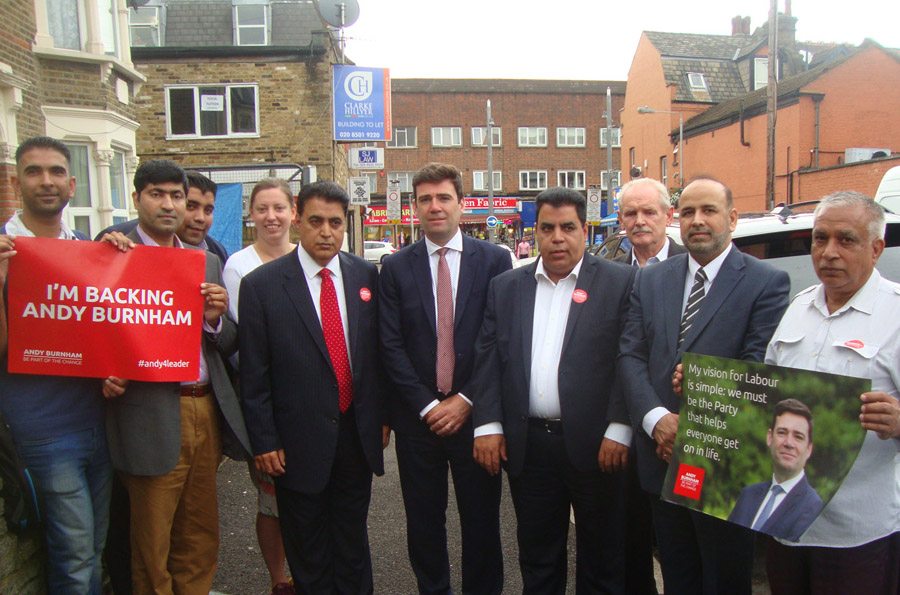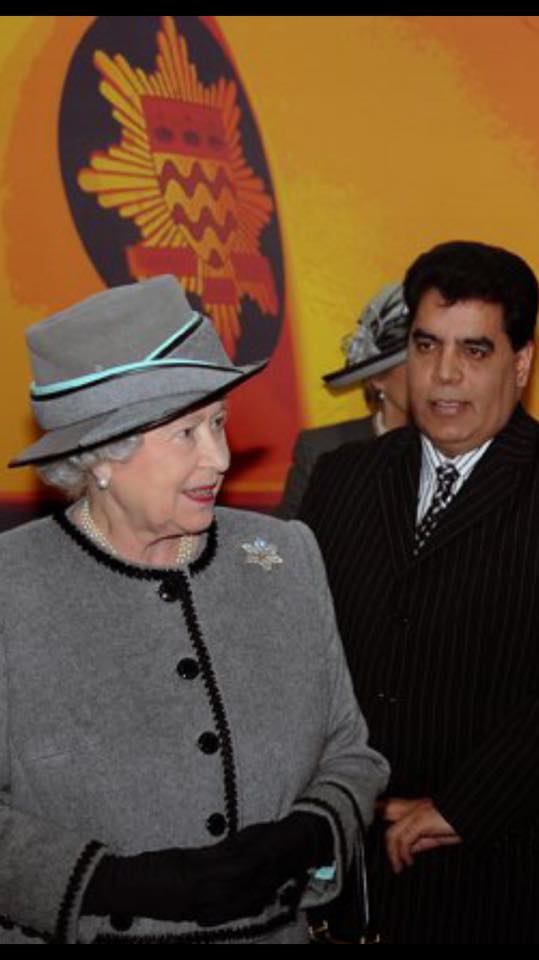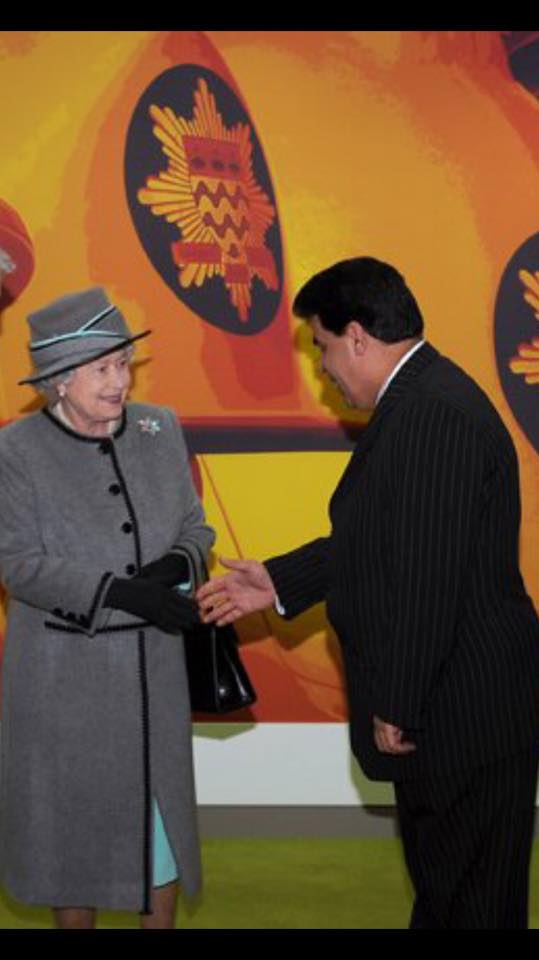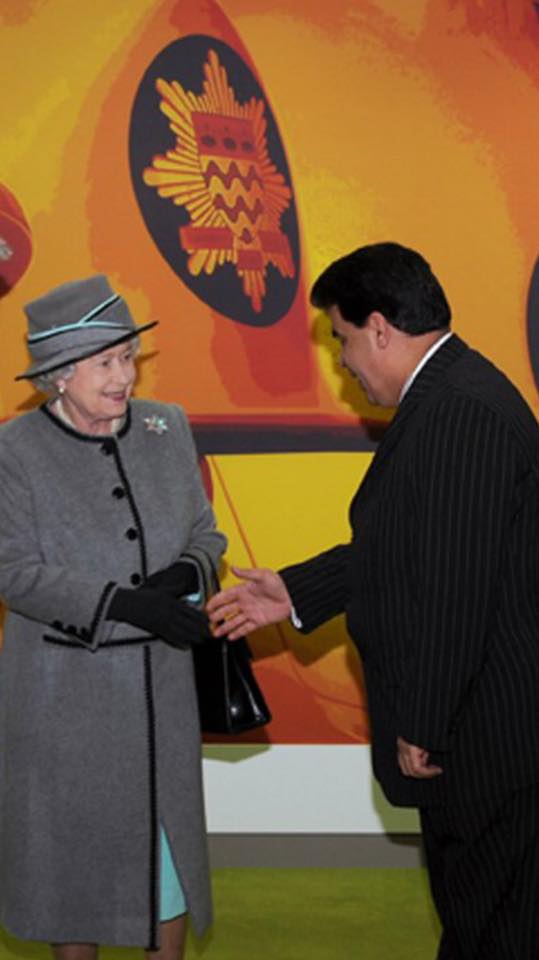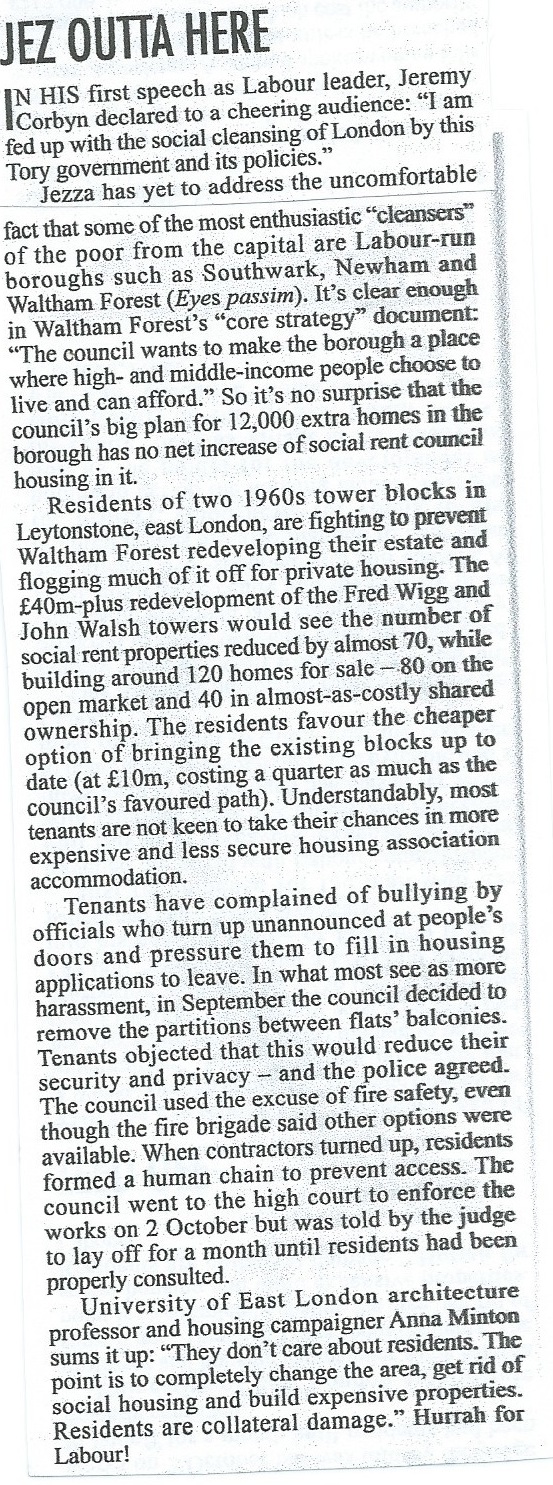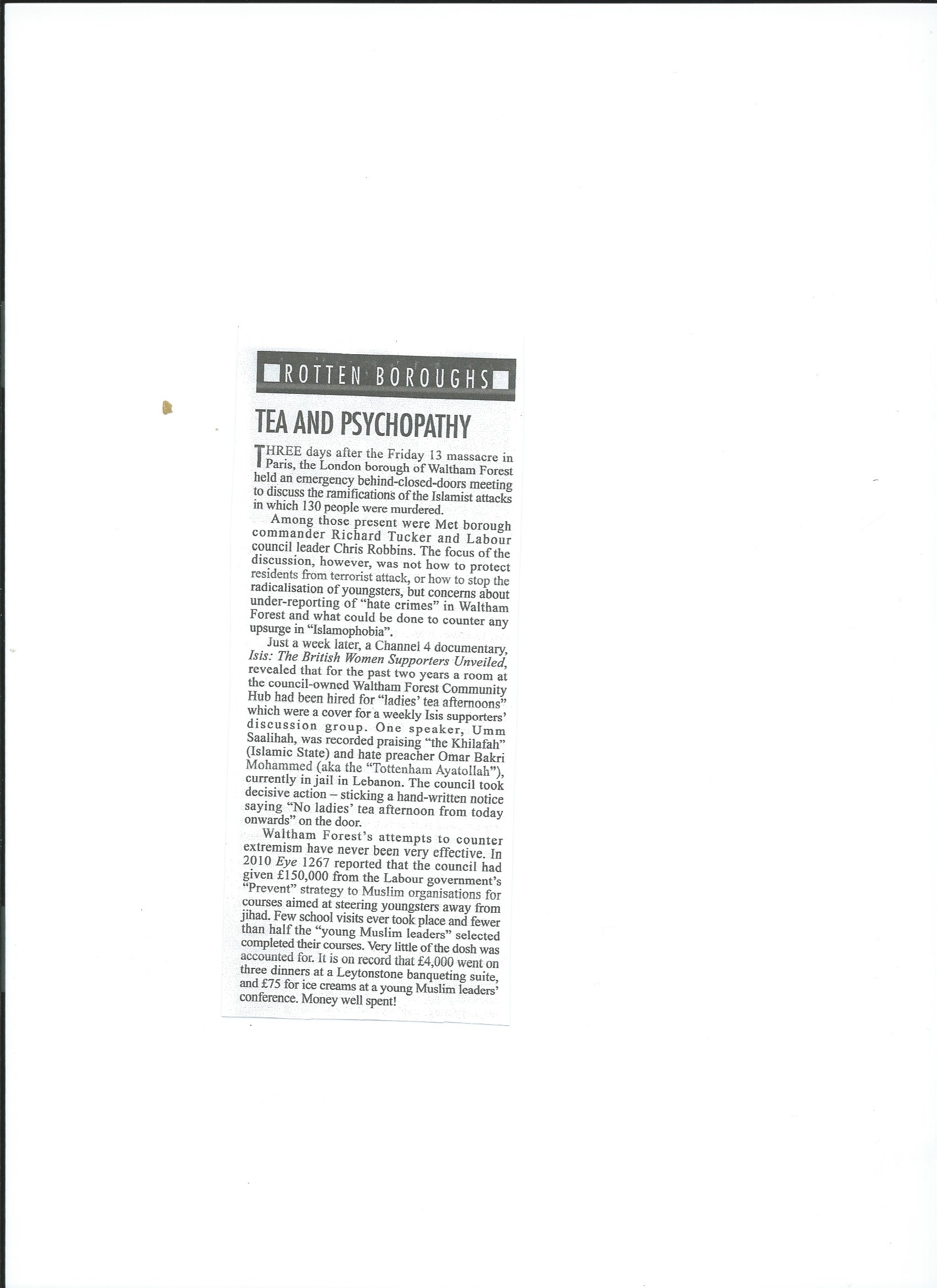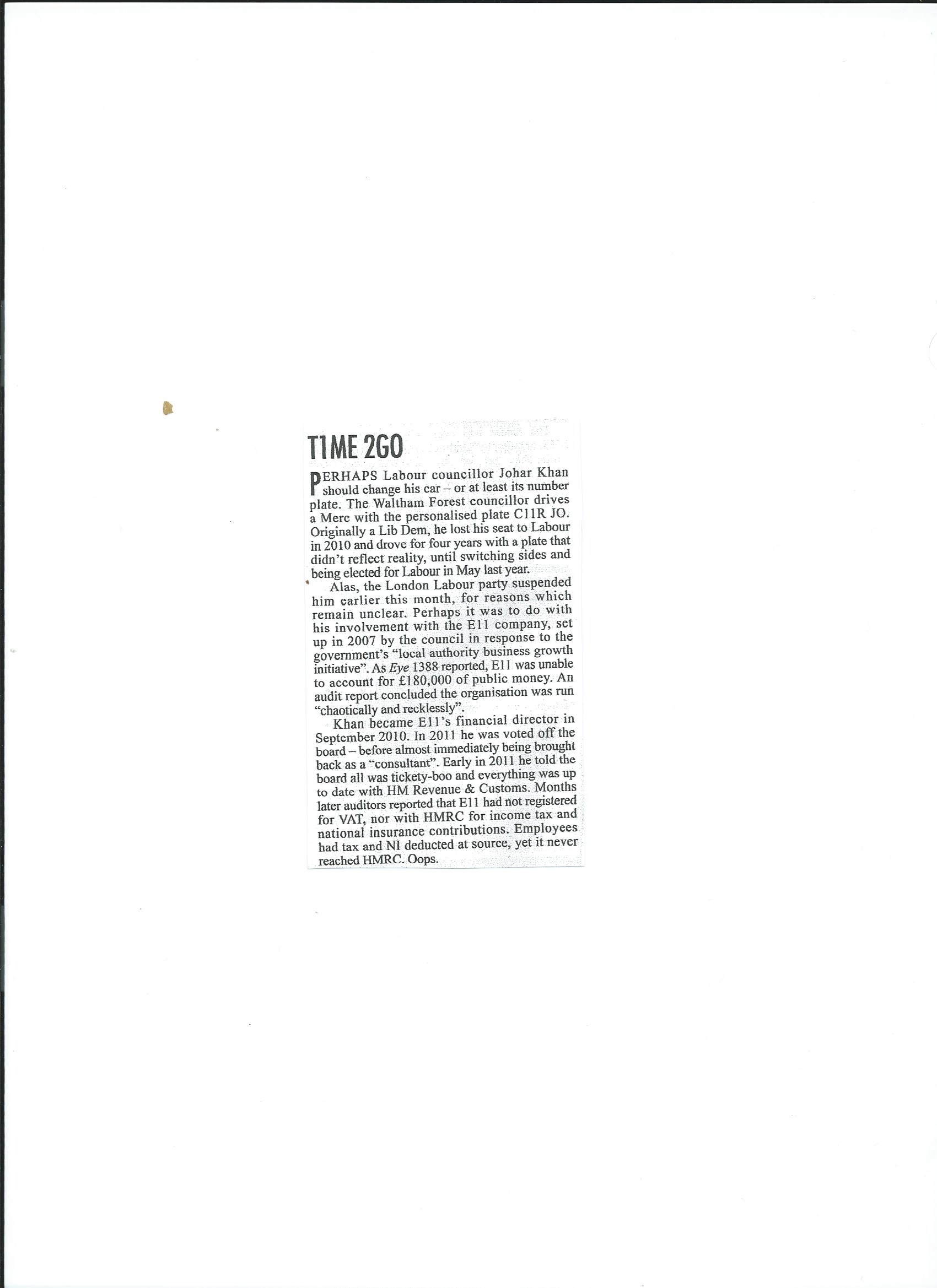I have been meaning to write about Waltham Forest’s Gang Prevention Programme (GPP) for some time, and now seems as good a time as any. The GPP is coming towards the end of its fourth year, has cost several million pounds, and garnered significant national attention. Yet this summer the local newspaper reported a series of seemingly awful stabbings, shootings, and murders, often featuring young people either as victims of perpetrators, and a couple of weeks ago alleged that there had been a ‘riot’ in Walthamstow – a story that then went national. So it is apposite to ask: has the GPP made a difference, and if so, of what importance?
First, a personal note. I was involved in the predecessors that led up to the GPP, and then joined the A Better Way Partnership Board (ABWPB), the programme’s official community partner, subsequently becoming its secretary, before resigning in 2015. It is true that I was never an insider, but I did have a detailed view of unfolding developments, and also collected a good deal of documentation. So what follows, I hope, is solidly grounded.
The GPP was formally launched in early 2011, and as regards its scope and ambition was something of a brave departure. Previously, anti-gang work in Waltham Forest had been fragmented, with the many agencies and community groups involved rarely speaking to each other in any coherent way. Now, the promise was to bring everyone together, and get them working within the parameters of a common strategy, headed by a dedicated coordinator. The approach to those involved in gangs was also novel. It was recognised that enforcement action against individuals was necessary, of course, but in itself not sufficient. The reality was that arrests could dent gang activity but not eradicate it. The key challenge was to convince gang members that their lifestyle was not just lethally dangerous but also a complete dead-end. And this meant, on the one hand providing real alternatives, and on the other, mobilising family, friends, and ultimately the local community as a moral force actively promoting change.
However, it needs to be added that the GPP was not simply a leap into the dark. Similar approaches had been tried in Boston and Strathclyde, with apparently promising results; the endeavour had high-level support, chiming in, for example, with thinking emanating from Iain Duncan Smith’s Centre for Social Justice, particularly the report Dying to Belong of 2009; while several key community activists, who had seen at first hand how current approaches were failing, vocally supported a change of direction. Programmes like the GPP are always hazardous. On this occasion the risks were mitigated.
At first, the new programme unfolded relatively smoothly. LBWF explicitly signaled that it saw anti-gang work as a priority. Funding flowed from the Leader’s Priority Fund, the LBWF Community Safety budget, a special arrangement with RSL Ascham Homes, and the Home Office. A professional with significant experience was recruited to be the all important programme coordinator. A hierarchy of joint committees emerged to deal with governance, including emergencies. The Family Partnership Team was created to implement the hard work of first contacting and then where possible engaging with gang members and their families. The Met provided extra resources, including officers from Operation Connect who were expert in the collation of intelligence. The ABWPB gained membership and momentum, and began carving out its role as community voice and critical friend. The Youth Independent Advisory Group, formed in 2009, was integrated. The move away from the fragmentation of the past was tangible.
But as the months passed, it became increasingly evident that the GPP was subject to some debilitating flaws. First, there was a notable degree of largely unhelpful politicisation. The context encouraged the process. Because of its relative novelty, the GPP attracted interest in the corridors of power, and ministers and Home Office officials regularly checked up on its progress. Never slow to recognise an opportunity that promised status and perhaps more money, LBWF responded by wherever possible by playing to the gallery. Staff time was diverted into a range of promotional activities, such as conference appearances and applications for awards. And for the same reason, public statements about the GPP’s performance tended to focus on headline friendly aspects of enforcement, for example a narrow range of crime data, often expressed solely in terms of crude percentage variations, with the historically very poor local sanction detection rates invariably ignored.
An indicative early example of what subsequently became an entrenched trend occurred in October 2011, when Council Leader Chris Robbins addressed the House of Commons Home Affairs Committee, and was notably upbeat in his assessments. The GPP, he remarked, ‘must have provided some substance’ to why Waltham Forest had avoided the recent pan-London riots, adding ‘It cannot just be a coincidence that we have reduced our violent crime figures’. The former claim might appear plausible, but a moment’s thought suggested otherwise. A priori, was it likely that a programme launched in early 2011, and inevitably measured as it found its feet, might, only six months later, in itself have prevented rioting? Moreover, as regards violent crime, Robbins was again on shaky ground. Indeed, an authoritative LBWF briefing paper, which examined the data for the six months to September 2011, suggested that far from declining during this period, ‘serious youth violence’ had in fact increased by 28 per cent.
A second flaw related to the GPP’s core management. Similar programmes in other boroughs were staffed by five or six professionals. LBWF employed one coordinator and one, sometimes two, other officers. That meant that their combined workload was consistently challenging, involving (amongst other things) liaison with gang members and their families; programme administration, budgeting, contracting, and monitoring; meetings with politicians, councillors, and other assorted interested parties; handling the press; and even drafting councillors’ speeches. Against this background, there was inevitably slippage, and hard choices to be made about priorities. The ABWPB wanted the programme to be promoted vigorously amongst local residents, and offered its services on a number of occasions, yet was rebuffed. Efforts to produce suitable literature were to some extent stymied by internal wrangling within the Town Hall. Nevertheless, it was clear, too, that those of the heart of the GPP were anyway wary about publicity simply because they feared that the programme might be swamped by requests for assistance. Frustrated by this situation, the ABWPB petitioned LBWF Chief Executive Martin Esom to beef up the GPP management, but found him obdurate.
Finally, there was a range of concerns about the contribution of the police. One constant difficulty stemmed from the fact that police officers – particularly senior police officers – regularly changed jobs, and so it was hard to build up any continuity in terms of involvement in the GPP. In addition, since wider Met concerns ebbed and flowed, with different ‘operations’ following each other in bewildering succession, and officer numbers fluctuating as a result, there was always some imprecision about exactly what weight was being given to what. Predictably, in discussions with prominent politicians, the Home Office, or City Hall, youth crime was always stated to be a priority, but whether this necessarily reflected reality on the ground was open to question.
Complicating matters further was the issue of how the police related to the GPP’s particular approach. Policing was – and had always been – primarily about catching criminals. Now officers were being asked to take part in a programme where enforcement was only one of several constituent ingredients. That alone created tensions. But there was a further troublesome dimension. Expert views about what constituted gang activity, even about how a gang should be defined, tended to vary, with only limited common ground. In this situation, the temptation was to fall back on the idea that any group of young people mixing together constituted a potential threat, a stance that had the added advantage of intuitively appealing to many adults in the wider population. Needless to say, some officers remained steadfastly committed to the GPP’s methodology and aims, but there were also times when their more traditionally minded colleagues got the upper hand, and on such occasions, the collateral damage could be significant, with fragile relationships laboriously built up over time strained or broken.
Against this background, the ABWPB spent more and more time attempting to keep the GPP true to its origins. There were a few successes, and one was very revealing. In 2013, the ABWPB sought clarification about the ‘the matrix’, the police listing of the 200 or so top ‘gang nominals’ in Waltham Forest, and discovered that 120 had no record of, or connection to, violent crime, and were included simply because of their alleged ‘affiliation’ to gang members, with ‘affiliation’ apparently covering everything from suspected involvement in joint enterprise to wholly innocent school or neighbourhood friendships. Nor was there any mechanism, it emerged, for removing those who had been first included, however they subsequently fared, and one name on the list in fact was found to be long dead. The upshot was a police promise to make ‘the matrix’ more robust, with regular reviews of the nominals, and excision of those who offered no threat. This was a positive outcome. But in other cases, and despite the considerable efforts of the organisation’s very capable chair, the ABWPB’s efforts were either sidestepped or ignored. Typically, when the Borough Commander was challenged to pursue the so called overlords who were supplying local neighbourhood gangs with drugs, he retorted mystifyingly that this was not in his power, and only Scotland Yard could so act.
In early 2014, the suspicions that had been growing about the GPP were largely confirmed. Commissioned by LBWF, the consultant Cordis Bright exhaustively examined how the programme was working, and came to some fairly devastating conclusions. There was, Cordis Bright concluded, ‘still…no consistent mechanism for measuring the outcomes of the programme…against its original objectives’. Even an assessment of those who had received direct assistance to escape the gang life style was difficult, because no data was available on their ‘background characteristics, the nature of intervention they receive and how much support they receive, and the impact of the support received on outcomes’. Thus, while it was true that serious youth violence, gun crime and knife crime offences had fallen in the borough over the past two years, the lack of solid monitoring data meant that ‘It may be that the GPP has made some contribution to this reduction…however, caution should be applied in suggesting that the GPP is solely responsible…i.e. a range of interventions and services may be contributing’. Even the GPP’s finances turned out to be problematic, with Cordis Bright reporting that they were ‘not regarded as transparent by the majority of stakeholders’, and adding in a damning coda: ‘Although there was some awareness among key decision makers and community members about the overall budget and spend of the GPP, they explained that they were not provided with detailed information about spending (including among the core team) [emphasis added]’.
By 2015, the GPP appeared becalmed. The coordinator’s contract was not renewed, and responsibility for running the programme passed to two officers with much broader portfolios. Uncertainty about future funding persisted. The wider scandal over the Met’s massaging of crime statistics further dented the credibility of claimed outcomes. Those in the know believed that knife crime in Waltham Forest, far from subsiding, was actually increasing. Meanwhile, the upper echelons of LBWF seemed to have lost interest, focusing instead on the government’s latest priorities, Troubled Families and Prevent. Symptomatically, another report from Cordis Bright, due at the beginning of the year, is still pending, amid rumours that it has been quietly ditched to avoid adverse publicity.
All in all, it is undeniable that, over its lifetime, the GPP has done some good, but also clear that it has nowhere near fulfilled its potential. Some of the underperformance relates to factors that are largely inescapable. All anti-gang work is unusually demanding. With their different occupational cultures, professionals do not necessarily meld together. The police force has its own complicated dynamics.
However, with that said, LBWF’s stance has done little to help. There is scant excuse for the politicisation and under-resourcing of management that has occurred, not least because each had been clearly identified as blighting previous programmes of a similar type, such as the NRF/BNI and Worknet (for which see earlier posts).
In 2009, the Independent Panel investigated LBWF and famously concluded: ‘Good organisations learn from problems and rectify them. Waltham Forest appears to do neither’. Sadly, the GPP is a further illustration of this formulation’s pertinence.
